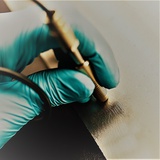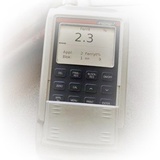The use of acid-resistant steels, especially acid-resistant clad steel, creates a number of technological and metallurgical problems. During welding stainless steel with a homogeneous austenitic structure and clad steel with a ferritic-pearlitic structure of the substrate there is mixing of an acid-resistant deposit with the austenitic structure and low-carbon filler with a ferritic-pearlitic structure.
In the case of austenitic steels, it is important to maintain the ferrite content present in the welds within the ranges specified by the standards since only the optimum ferrite content guarantees good corrosion and fatigue protection of the joints. If the content of ferrite in the weld joint is too low, then the welded material tends to burst hot; if the ferrite content is too high, then the strength, ductility and the corrosion resistance deteriorate. In duplex type steels the ferrite deficit in the weld results in cracking and reduced strength.

Application
Control of the welding process of high alloy steels on the basis of standard PN-EN ISO 8249:2005 "Welding. Determination of Ferrite Number (FN) in austenitic and duplex ferritic-austenitic Cr-Ni stainless steel weld materials."

Important to know
The applied welding technique and the selection of welding materials should guarantee the ferrite content in the austenitic weld within 2-8% for manual welding and up to 10% for automatic welding.
